
All categories
Featured selections
Trade Assurance
Buyer Central
Help Center
Get the app
Become a supplier

(4680 products available)




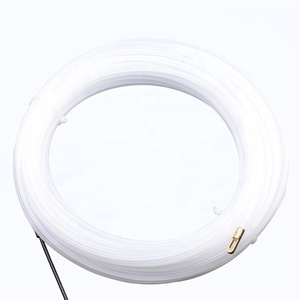




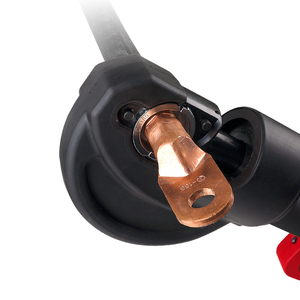

















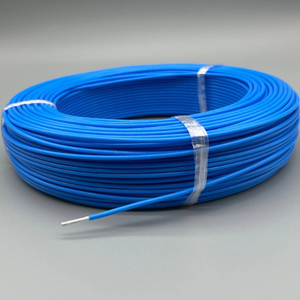

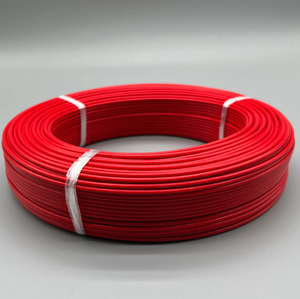



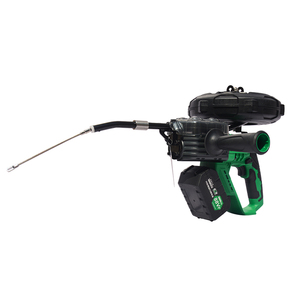

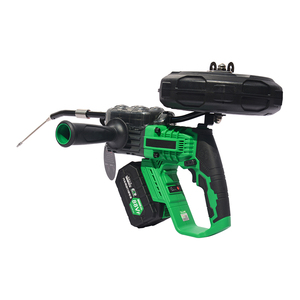









Electrical cable pullers are very much in use by electricians and those in the construction industry for installing wires in conduit systems, ducting, or raceways. These pullers come in different forms.
These pullers are human-operated through the logger mechanism. All it takes is a few hand rotations to pull electric cables. They are portable and lighter and can be used in small or lesser-consuming jobs.
As the name applies, these pullers offer ease and convenience because they need electric power or battery to pull the cables. They are used best in jobs that require massive cable hauling over great distances or numerous times. Electric wire pullers are consistent in their working and produce a very high level of pneumatic worker pressure.
Using compressed air for operation means these pullers work like a pneumatic motor. They are mostly used in outdoor construction. Similar to electric pullers, they are strong and effective for big jobs.
These pullers operate by conveying the hydraulic liquid through the pump to create an output. An example would be the pullers working on a large-diameter cable. Hydraulic pullers are resilient, powerful, and effective.
Winches are familiar with wire or rope pullers over distances. In cable pulling, cable winches have cables wound tightly around their drums to pull cables over large spaces. They are employable to tow a vehicle or pull huge structures.
This is an electric cable bearing capacity employed in power systems, current systems, and telecommunication systems of buildings, good, and infrastructural development projects like construction of epaulets, bridges, and highways. Manual and powered cable pullers are used to accurately and timely install large quantities of electrical cables in these enterprises.
HDMI wire pullers are also widely used by electrical utility companies during the installation of underground or overground power distribution lines. Pneumatic or hydraulic pullers are largely applied in this area due to their applicability in daily tasks and high endurance, providing the capacity needed for large cables.
The mining industry extensively employs electrical cable pullers for operating lighting, ventilation, and power systems in underground and surface mines. The challenging conditions in mining frequently necessitate the use of robust manual and mechanical cable pullers.
The cable pulling needs in this area are massive, as they involve a wide range of medium and high voltage power cables, communication lines, and submarine fibre optic cables. hydraulic and pneumatic pullers are employed in this area of work to withstand turbulence and increase production.
For railways and other transportation systems, the electrical cable puller is used to lay the cables for signalling systems, communication, and power distribution. Electric cable pullers help with the effective and speedy hauling of long-distance cables required in this large area of industry.
Cable pullers are used in Setting up electrical systems in large factories and manufacturing units. Usually, the plant's expansion or a new system installation needs many cables to be positioned, which is where cable pullers are useful.
In solar and wind energy system installations, electrical cable pullers are used to position the wiring systems. Hydraulic pullers are particularly useful in this high-tension cable installation.
Pulling capacity
Cable pullers, whether manual, hydraulic, or pneumatic, are differentiated by their forcing ability. This characteristic shows how thick or advanced a cable can be pulled through. Pullers that can accomplish high pulling capacity are suitable for large diameter or high tensile cable applications.
Construction material
Waterproof pullers are always made of strong materials to resist bending, twisting, and everything in between. Premium quality die-cast aluminium, steel, and extreme-quality composite materials are generally employed. In other words, they are lightweight, hard-wearing, and durable cable pullers.
Mechanical advantage
The mechanical advantage is the electric cable puller's key element in providing the movement. For manual pullers, this is provided by the hands of users through the lever or worm gears, while electric and pneumatic pullers have rotors that produce the mechanical advantage. An electro-mechanical advantage requires a smaller number of mechanical sources, meaning that it can be employed to pull thicker cables over greater distances of cables.
Safety features
Cutting tools should be safe to use. Wire puller tool safety features include, but are not limited to, motor braking, overload protection, and cable guards or shields. Cable pullers are colour-coded and designed so that they are hard for everyone to use.
Durability
Out generally, cable pullers are made to be water-resistant, proving themselves under extreme situations. For instance, pneumatic cable pullers are quite often used in marine or constructional disturbances, with dust, water, or chemical exposure environments, needing pullers to be resistant to corrosion, bending, or twisting.
Material quality
Usually, electrical cable pullers are made from high tensile strength materials that can bend and tear, namely aluminium alloys, high tensile steel, or composite materials. Such materials confer on the product mechanical endurance and resistcorrosiveoe with different substances and environmental factors.
Construction design
Usually, quality pullers are designed and engineered to give the maximum mechanical advantage. Effectual machines promise easier operations and higher capacity for pulling cables without snapping or tearing them. Well-constructed pullers are employed over and over in terms of heavy-duty commercial usage.
Finer hardware
Good quality hydraulic pipe cutter pullers have good-quality hardware like bearings, gears, and pulleys that reduce friction and increase efficiency. The use of quality bearings further minimises wear and tear and provides seamless operation.
Testing and certifications
Quality pullers are products that are tested and certified by various organisational bodies regarding their pull-off capabilities, load-off capacities, and safety factors. Look for certifications from standard-setting bodies regarding pullers to ensure they meet national and international quality standards.
Overloading the puller
This is an easy but common mistake: attempting to pull heavy cables that exceed the puller's rated capacity. This could bring improbable consequences, such as mechanical failure, cable snapping, or even serious accidents. Always employ a puller that has the capacity to handle cable thickness and material type for that specific job.
Proper setup
not; the cable puller is set up properly during cable pulling operations to ensure that the cable runs freely through the guides and that tension is evenly distributed. Ensure all pulleys and rollers are rotating freely to eliminate potential hotspots where cable could become snagged and damaged. Failure to do so could lead to equipment malfunction, cable damage, or personal injury due to unexpected friction or snapping.
Wear personal protective equipment
It is always right to wear the right work-related personal protective equipment, PPE, like safety glasses, hard hats, gloves, and, when necessary, hearing protectors. These help to reduce injuries as machines are being operated at workplaces, especially hydraulic and pneumatic pullers that describe how much pressure they generate. These pressures pose a risk for those who have not taken the required precautions.
Regular inspections
Regular inspection, as in certified preventive maintenance, saves different machines and has better quality pulled out. Before each use, check the puller because of how and when it was used previously. Don't use any worn-out, damaged, or unsafe wire pullers; replace them immediately, and ensure their safety after inspection.
When buying a cable puller, several factors should be considered. These factors include the diameter of the cable to be pulled, the transfer distance, and the working condition. Manual pullers are suitable where power sources are unavailable, and small-scale pulling tasks are involved. Where thick cables and long-distance pulls are involved, and tasks are of commercial interest, hydraulic, pneumatic, and electrical pullers should be employed.
Cable pullers work basically by hauling or pulling electrical cables through conduits or tubing by producing mechanical tension. Cable pullers function by using different power sources, such as manual labour, electricity, air compression, or hydraulic fluids, to provide the mechanical force needed to pull the cable through confined spaces.
A cable puller is used to pull wires or cables in electrical installations through conduits, ducts, or other enclosed spaces. Cable pullers are employed in a variety of places, from large constructions to routine electrical remediation, making it easier to lay cables smoothly and efficiently.
Pneumatic cable pullers are powerful and well-protected; they are suitable for various work conditions, including moist conditions. It should be noted that the performance of the pneumatic puller may be affected if excessive amounts of humidity or moisture reach the area of the machine, affecting the air motor.